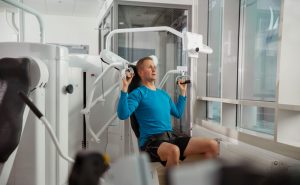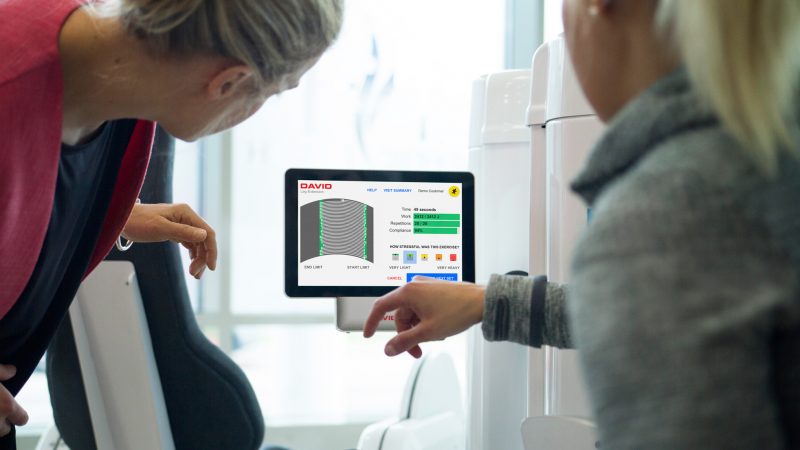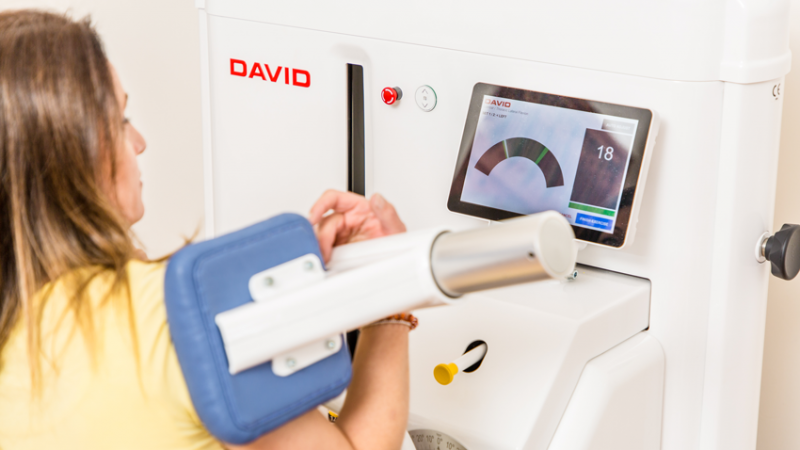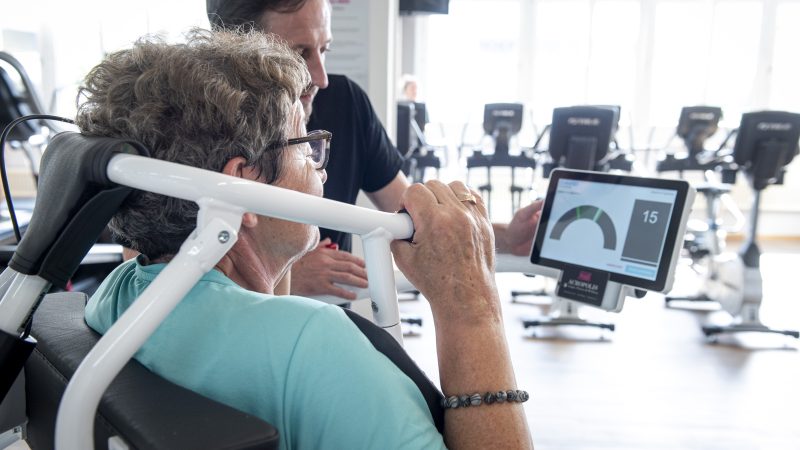Physiotherapy and COVID-19
Not all patients recovering from COVID-19 will need physiotherapeutic guidance. Only patients with a limitation in physical capacity and/or physical activity are eligible for physiotherapy. Patients with multiple problems (physical, psychological and/or social) are candidates for multidisciplinary rehabilitation [1].
Since it is not yet clear how long term patients with COVID-19 are still contagious, safe communication between the patient and the physical therapist should be considered, for example by means of video calls [2,3]. By means of e-health or under the supervision of the physical therapist with adequate protective equipment, the exercises can possibly be carried out under physical therapist supervision. This has partly to do with the following:
- COVID-19 can have a severe impact on lung function (including O2 desaturations during exercise due to virus-induced and/or pre-existent pulmonary functional abnormalities).
- COVID-19 can have a severe impact on cardiac function (including virus-induced myocarditis, arrhythmias and/or pre-existent cardiac abnormalities).
- A good estimation of adequate training intensity is not possible in the same way as an estimation of the risk of physical training with a moderate/high intensity because there is no maximum exercise test in the post-acute phase [3].
Treatment summary
Three to five times a week physiotherapy to improve overall VO2max/fitness is advised. Muscle strength also needs to be built up.
In the first 6 weeks, activities in daily life and additional exercise therapy should be performed at low to moderate intensity, with a short duration of exertion. A maximum score of 4 on the Safety Scale 0 to 10 applies for shortness of breath and fatigue [4].
After six weeks after discharge from the hospital or at home, exercise therapy should be carried out on the basis of the patient’s request for help and the patient’s actual physical functioning. Targets for further build-up of physical activity and/or physical capacity of the patient based on the exercise test and/or measurement of physical activity can be drawn up [4].
In the long-term recovery phase (3 months) after discharge from the hospital, the physiotherapist should be proactive with regard to screening PICS characteristics. Patient-oriented treatment is important [1].
These factors should be carefully considered in regard to safe exercise therapy.
These factors should be carefully considered in regard to safe exercise therapy.
For the time being, it seems feasible to apply the known training principles, as they are also used in chronic lung patients, to symptom load management (shortness of breath and fatigue) after 6 weeks [1,4].
It is important to ensure a calm, graded build-up of training intensity and frequency based on the patient’s request for help and treatment goals and abilities. During exercise, a score of 4 to 6 on the Safety Scale should be maintained for shortness of breath and fatigue and/or an intensity of 60-80% of the maximum cycling load, the average score on the 6MWT and/or the 1 RM [4].
Already existing comorbidity in COVID-19 survivors during rehabilitation should also be monitored in order to guarantee the safety of the rehabilitation treatment and to optimize the health of these patients. This requires a multidisciplinary team of medical specialists [1].

It is important that the physical therapist in the primary care practice knows where his resources and expertise lie, but also where additional research is necessary so that timely consultation and referral to the hospital can take place.
Exercise therapy and/or coaching of exercise in non-infectious COVID-19 patients with a residual pulmonary function disorder should be performed by healthcare professionals who already have experience in treating patients with respiratory limitations [1].
Nothing is known yet about the total duration of the physiotherapeutic counselling.
The Dutch KNGF guideline COPD describes the following: although a number of studies suggest that positive effects are maintained longer after longer training programmes (> 12 weeks), shorter training programmes (4 to 7 weeks) also appear to result in a clinically relevant improvement. Treatment progress should be followed by repeated evaluation of symptoms, muscle strength, exertion, daily physical activity and self-management (including the effectiveness of the mucus clearance). Based on the available literature, it is advised to make follow-up appointments after the end of a rehabilitation programme. Education of the patient to improve therapy compliance and self-management should be an integral part of the physiotherapeutic counselling. Promoting physical activity during the training programme is important. The physical therapist must strive to allow the patient to develop an independent active lifestyle from a problem-solving approach and in cooperation with the patient [3].
In the end, patients recovering from COVID-19 must also be able to guarantee their fitness independently of their physical therapist. Knowledge transfer and the development of an active lifestyle in this patient group is, therefore, an important task for the physical therapist.
How a physiotherapy clinic operates during the pandemic
Resources
1. https://www.kngf.nl/binaries/content/wp-content/kennisplatform/onbeveiligd/coronavirus/aanbevelingen-covid-19-fysiotherapie-post-ziekenhuis_final-version-april-3-2020_nl-vertaling-v3.pdf
2. Dutch KNGF guideline COPD
3. Dutch KNGF vision physiotherapy by COVID-19 patients
4. Dutch KNGF vision physiotherapy by covid-19 patients version 1.0
5 Physiotherapy and Science website https://www.fysiotherapiewetenschap.com/expert-opinion/40/fysiotherapie-in-de-eerstelijn-na-covid-19
Read our the earlier blogs about COVID-19:
Blog 1/3 > Recommendations for physiotherapeutic intervention COVID-19 patients
Blog 2/3 > Physical Therapy intervention COVID-19 for IC patients.
Blog 3/3 > Physical Therapy after COVID-19
Blog 4/4 > Update: Physical therapy after COVID-19
 English
English 
























